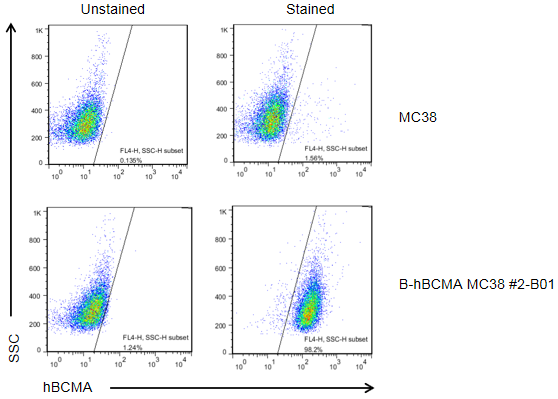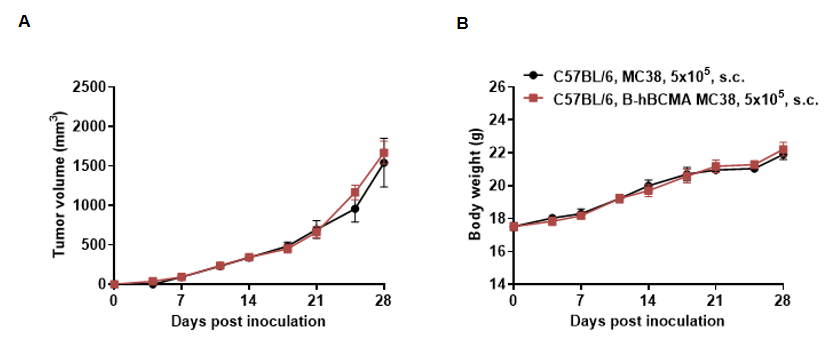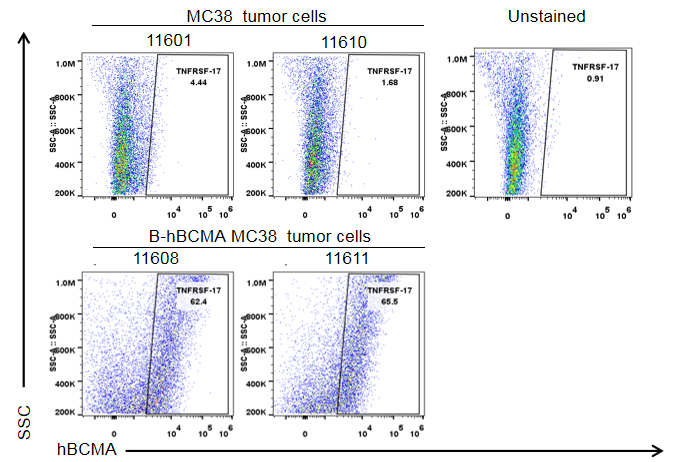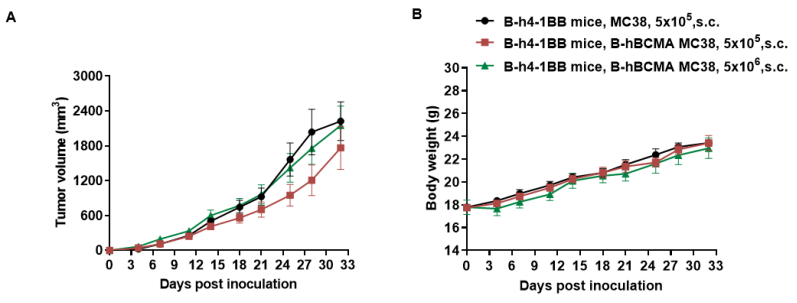|
Common name |
B-hBCMA MC38 | Catalog number | 310720 |
| Aliases | BCM, CD269, TNFRSF13A, TNFRSF17 | Disease | Colon carcinoma |
|
Organism |
Mouse |
Strain | C57BL/6 |
| Tissue types | Colon | Tissue | Colon |
Description
The human BCMA coding sequence was inserted into the ROSA26 locus in MC38 cells. Human BCMA is highly expressed on the surface of B-hBCMA MC38 cells.
Application
Targeting strategy


Subcutaneous homograft tumor growth of B-hBCMA MC38 cells. B-hBCMA MC38 cells (5x105) and wild-type MC38 cells (5x105) were subcutaneously implanted into C57BL/6 mice (female, 5-8-week-old, n=5). Tumor volume and body weight were measured twice a week. (A) Average tumor volume ± SEM. (B) Body weight (Mean± SEM). Volume was expressed in mm3 using the formula: V=0.5 X long diameter X short diameter2. As shown in panel A, B-hBCMA MC38 cells were able to establish tumors in vivo and can be used for efficacy studies.
Protein expression analysis of tumor cells

B-hBCMA MC38 cells were subcutaneously transplanted into C57BL/6 mice (n=5). At the end of the experiment, tumor cells were harvested and assessed for human BCMA expression by flow cytometry. As shown, human BCMA was expressed on the surface of tumor cells. Therefore, B-hBCMA MC38 cells can be used for in vivo efficacy studies of novel BCMA therapeutics.

Subcutaneous homograft tumor growth of B-hBCMA MC38 cells. B-hBCMA MC38 cells and wild-type MC38 cells were subcutaneously implanted into B-h4-1BB mice (female, 7-week-old, n=6). Tumor volume and body weight were measured twice a week. (A) Average tumor volume. (B) Body weight. Volume was expressed in mm3 using the formula: V=0.5 X long diameter X short diameter2. As shown in panel A, B-hBCMA MC38 cells were able to establish tumors in vivo and can be used for efficacy studies. Values are expressed as mean ± SEM.









